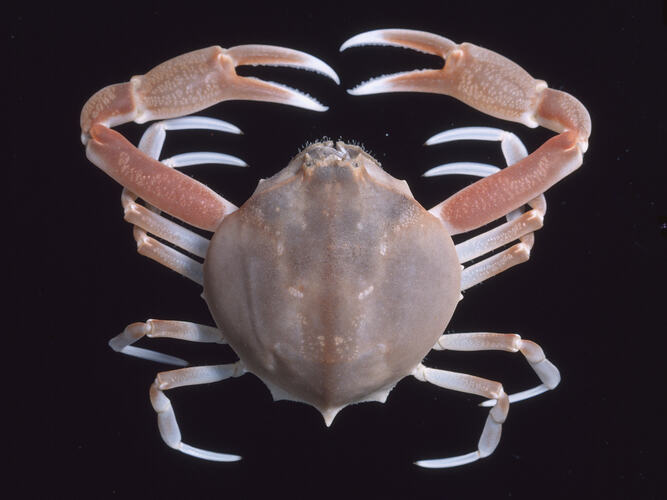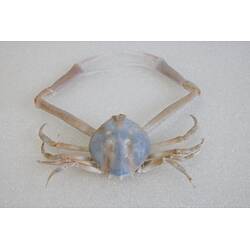General Description
Body smooth, circular and mottled light and dark green-grey. Three triangular teeth on rear of the carapace. Up to 4 cm wide (carapace).
Biology
Many Pebble Crabs are apparently nocturnal; they can be found partly buried in the soft mud of intertidal seagrass meadows during the day. At night they use their long chelipeds (legs with claws) to capture small invertebrates, though they also may scavenge dead material. Large male Pebble Crabs have longer claws than the females.
Distribution
South-eastern Australia.
Habitat
Muddy areas, to depth of 95 m.
More Information
-
Animal Type
-
Animal SubType
-
Brief Id
Three spines on rear, smooth carapace, circular body.
-
Colours
Green, Grey
-
Habitats
-
Diet
Carnivore
-
Diet Categories
Animal matter
-
Endemicity
-
Commercial
No
-
Conservation Statuses
CITES: Not listed, FFG Threatened List: Not listed, EPBC Act 1999: Not listed, IUCN Red List: Not listed
-
Depths
Deep ( > 30 m)
-
Water Column Locations
On or near seafloor
-
Taxon Name
-
Scientific Author
(Kinahan, 1856)
-
Common Name
Large Pebble Crab
-
Phylum
-
Subphylum
-
Superclass
-
Class
-
Subclass
-
Superorder
-
Order
-
Suborder
-
Infraorder
-
Family
-
Subfamily
-
Genus
-
Species Name
undecimspinosa


